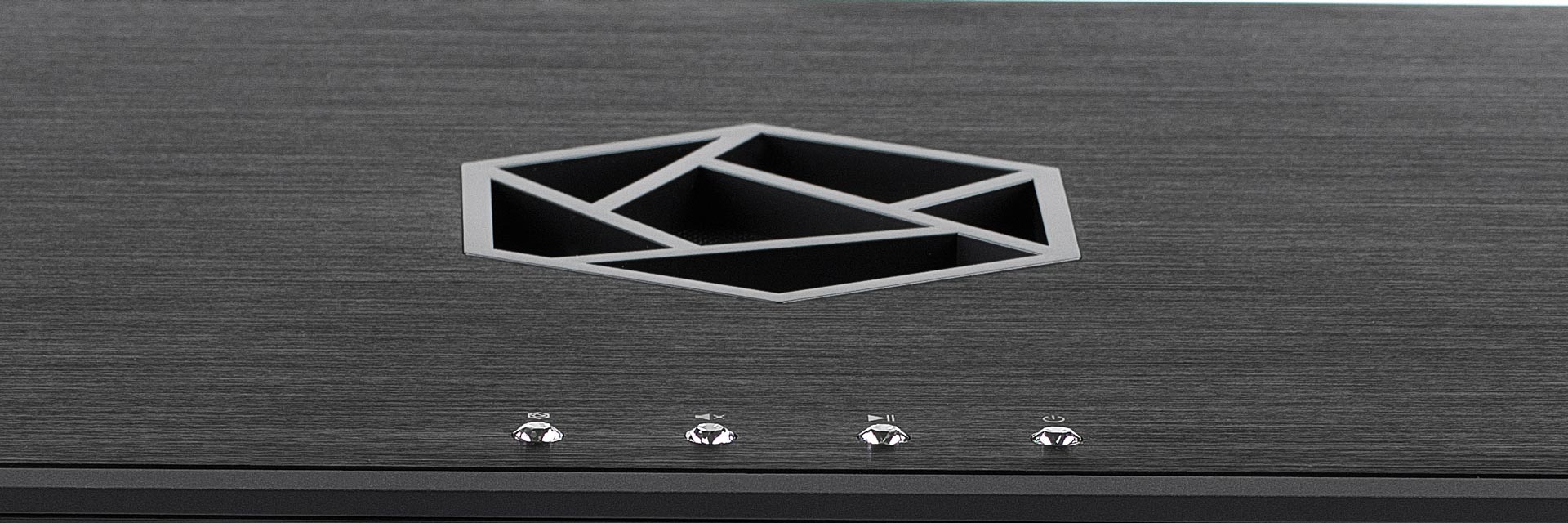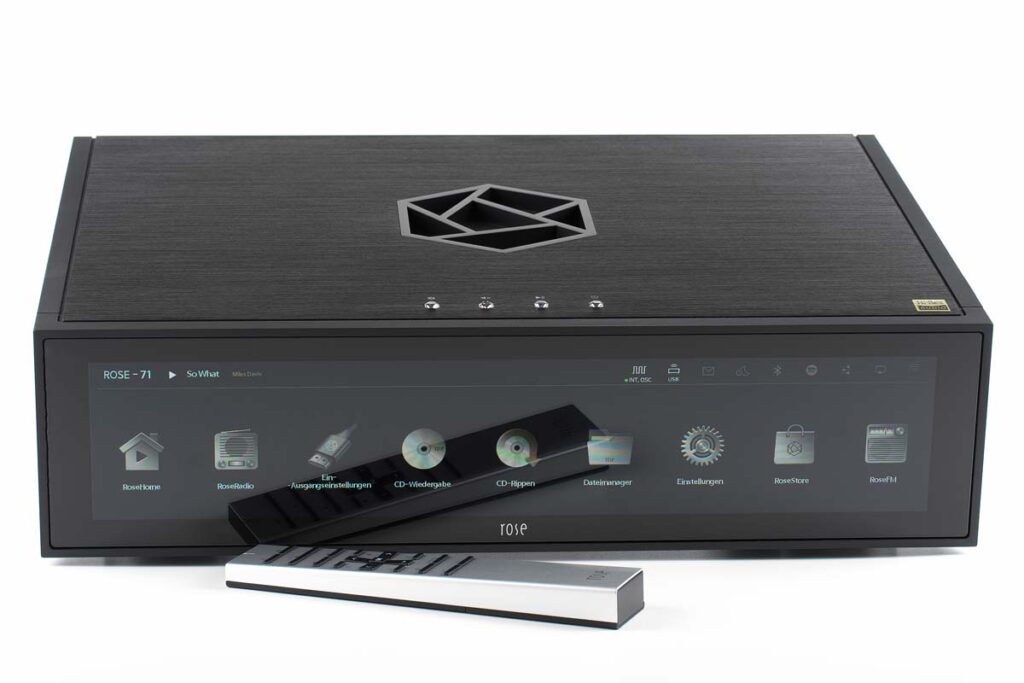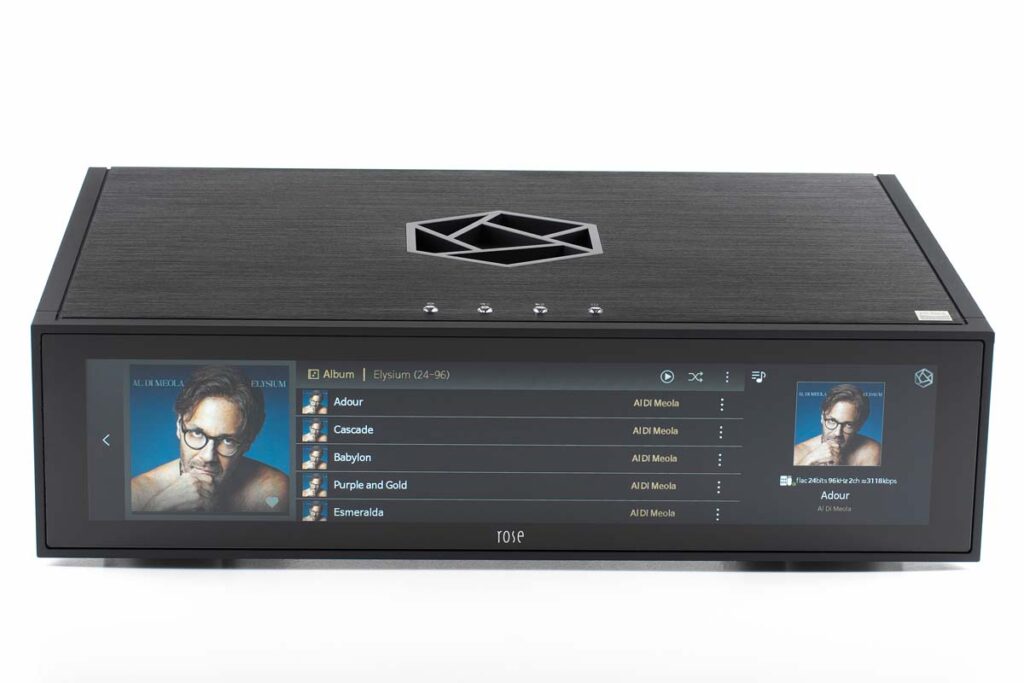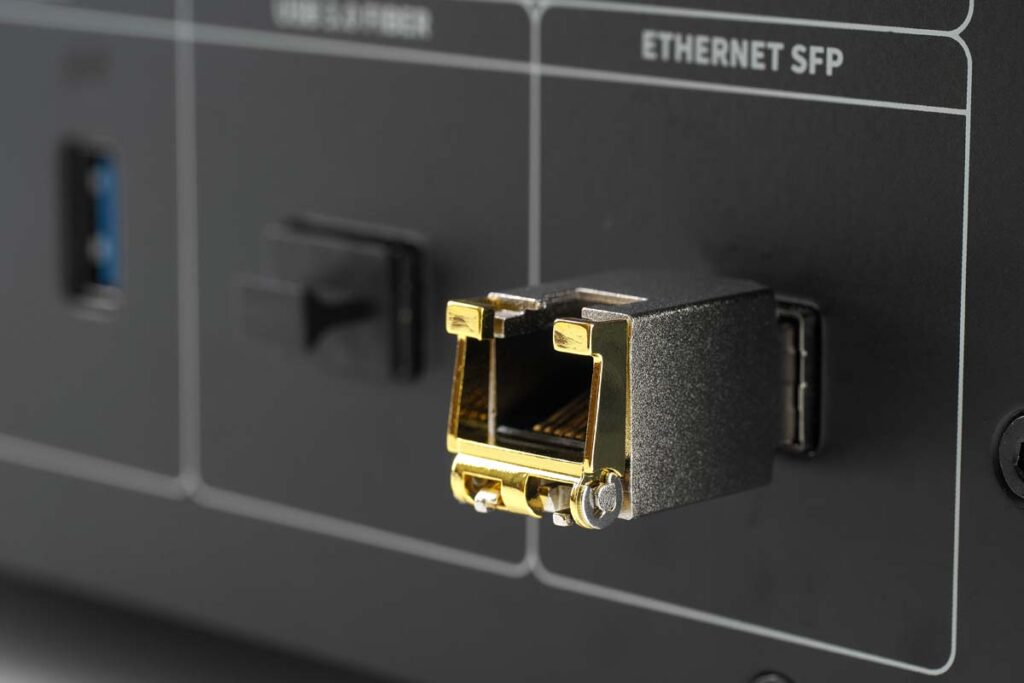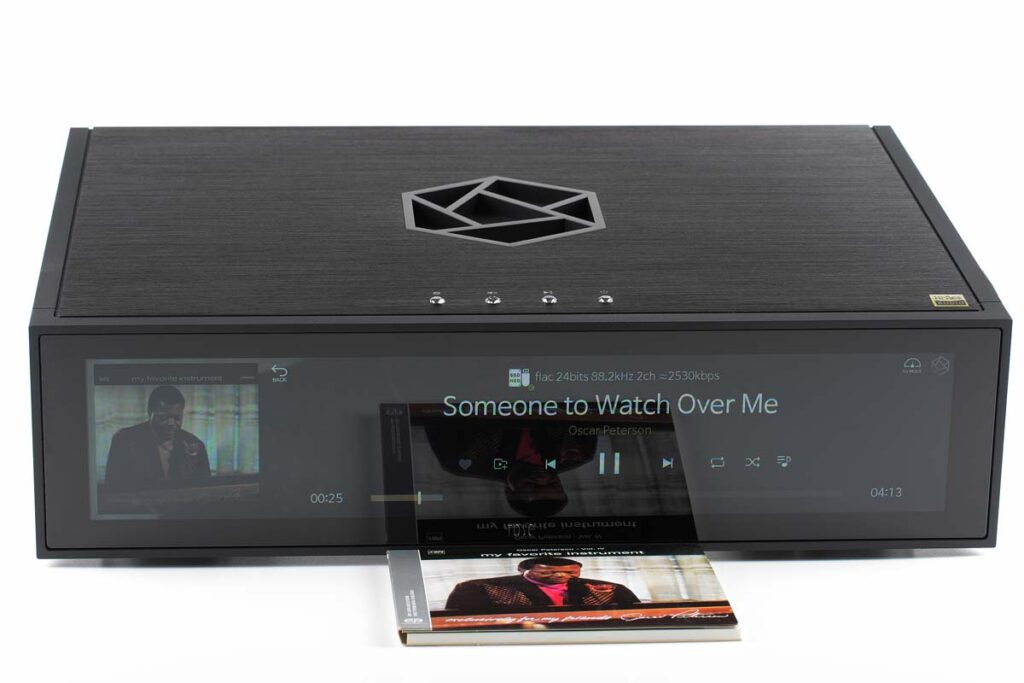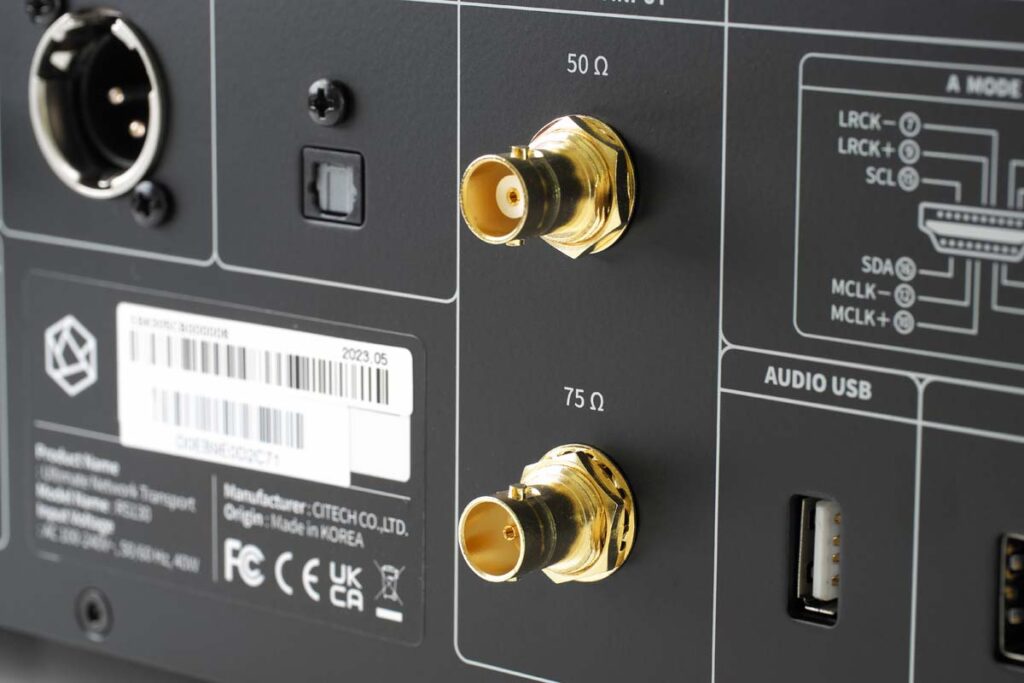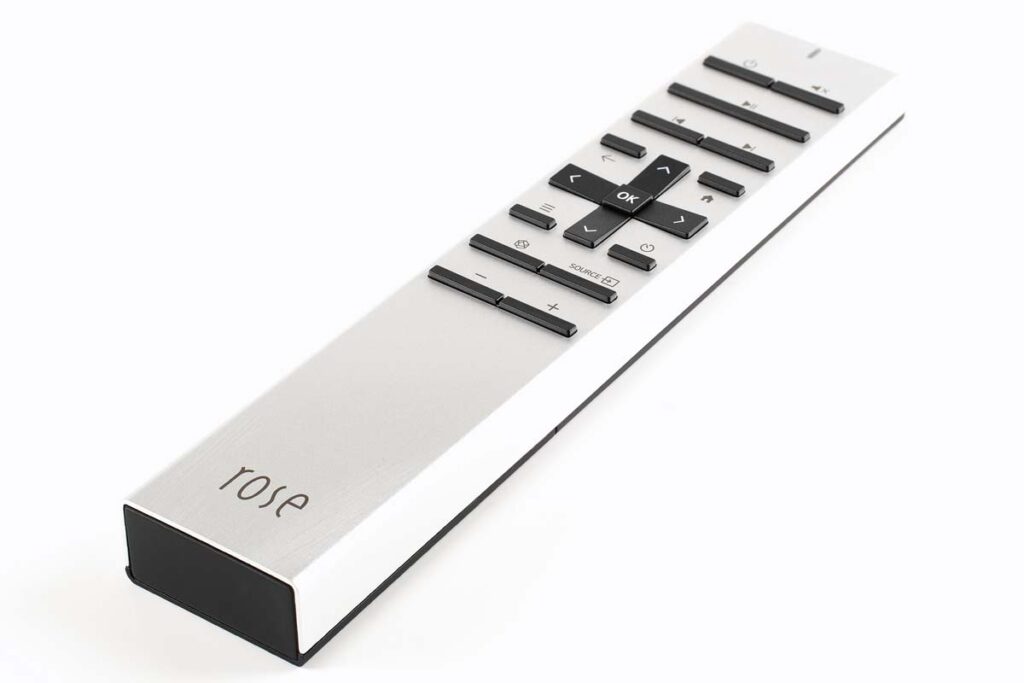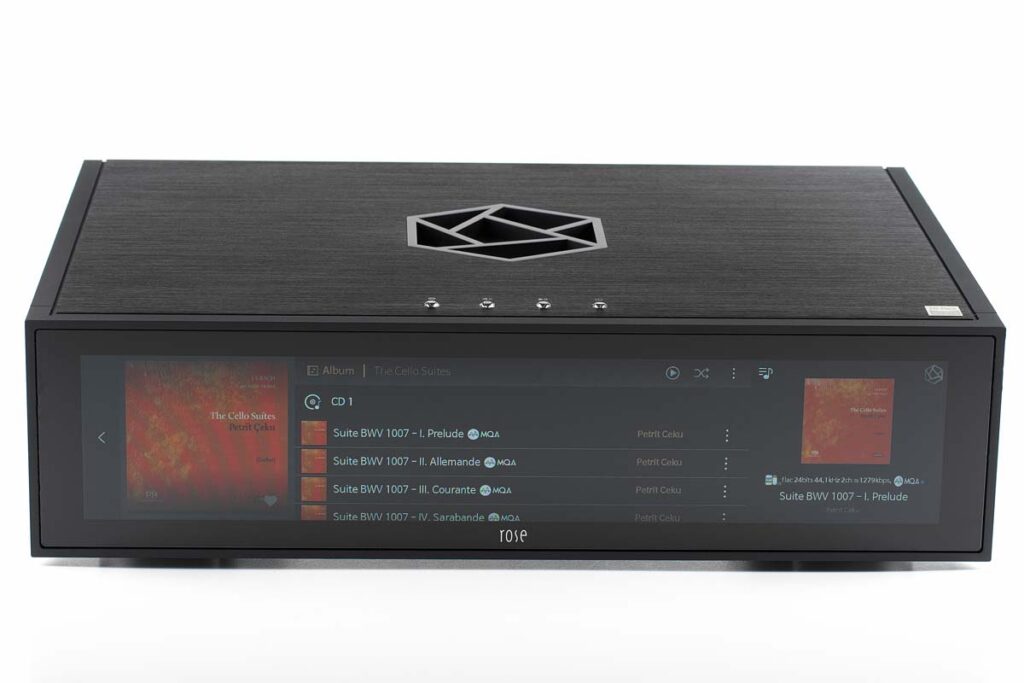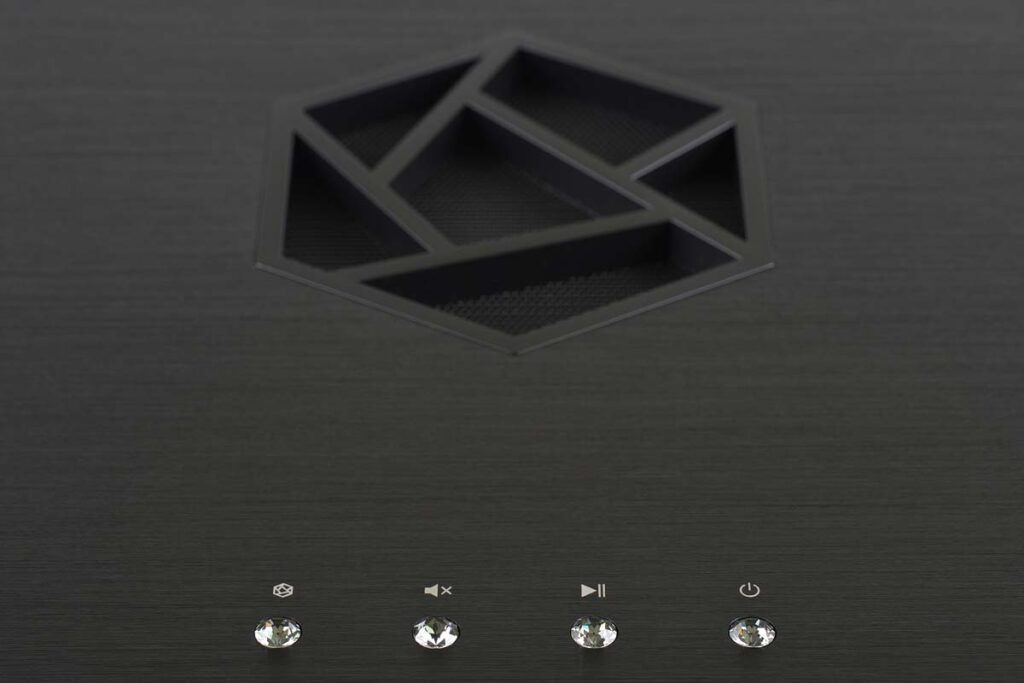Streaming specialist HiFi Rose has a new floribunda in its line-up: The RS130 is a network transport that is said to pass digital audio files in exceptional quality thanks to its particularly elaborate design – all golden ears are all ears.
HiFi Rose, the audiophile brand of the South Korean high-tech company Citech, has been around since 2017. And the Koreans have built up an excellent reputation with their first-class streamers. They keep impressing us with great sound quality and outstanding ease of use. However, streamers with an integrated DAC are not an attractive option for all digitalists among the high-end users. Typically, there is already a competent converter in the system that does a solid job of the signal translation. This is exactly where the HiFi Rose RS130 comes into play: it is a pure network transport that only takes care of processing and controlling digital audio files from local storage or online services. The downstream devices are responsible for making them audible. The RS130 is the ultimate dream machine for anyone who has previously used a laptop as a transport, delivering first-class processed music files encoded in zeros and ones to existing DACs at a price of around 4800 euros. An audiophile purveyor with a lot of cutting-edge technology.
Network access done differently
The RS130 does not connect to the LAN at home via the usual connection paths. It does not have a built-in WiFi module, and it is equally in vain that we look for any of the usual RJ45 sockets. Instead, the RS130 is equipped with a slot for an SFP module (SFP stands for “Small Form Factor Pluggable”), which also allows for data transfer via fiber optic cables, provided an appropriate module is available. The scope of delivery includes an SFP adapter for connecting a standard copper network cable. However, a genuine fiber optic network has a clear advantage: long cable runs pose no significant problems here, there is 100% galvanic isolation from the network hardware and practical immunity to interference. If you prefer wireless, connect the supplied USB WiFi adapter to one of the two USB 3.0 ports, which are otherwise intended for connecting external mass storage devices.
The Citech developers have also taken a big step forward in terms of USB connectivity. The RS130 features a USB fiber optic connection that enables virtually interference-free, bidirectional data exchange via fiber optic cable. However, this requires an external USB 3.0 fiber hub and an optical cable. Neither is included in the scope of delivery. In any case, the USB fiber connection is exciting because it could also be used to control appropriately equipped USB converters. Exactly, we can already hear the digital music of the future ringing.
The Jitter stops here
The HiFi Rose RS130 already does a lot to transport audio files to the DAC in optimum quality via USB, AES/EBU, S/PDIF, Toslink or I2S. When streaming or reading from connected USB devices, the data is first stored temporarily on a dedicated SSD. This is intended to eliminate dropouts and the resulting interference that can occur when reading from USB hard drives. Latencies or interruptions are also effectively avoided during streaming – which we can confirm without any restrictions.
In the world of digital audio, it’s all about time accuracy, and jitter is an arch-enemy in the playback of digital audio files. Consequently, the RS130 features an Oven Controlled Crystal Oscillator, or OCXO for short, which sets the clock and is intended to minimize unwanted clock jitter. As if that wasn’t enough, the RS130 developers also allow the connection of a 10 megahertz master clock and have cleverly built in both a 50 and a 75 ohm input. This means that renowned super clocks such as the Mutec REF10 can be connected and jitter doesn’t stand a chance. We will find out what the OCXO clock of the RS130 is capable of in the listening test.
The linear power supply inside the ultra-robust, vibration-optimized aluminium housing is designed in-house and also makes it clear that clinical cleanliness is a top priority for the Koreans. In fact, the highly sensitive electronic components are carefully shielded from each other to prevent any interference. It goes without saying that there is a dedicated audio USB port for USB DACs – and we will now turn our attention to the operation of the Transport.
Musical Eye Candy
The central control element of every HiFi Rose device is a touchscreen. In the case of the RS130, this is particularly impressive: The multi-touch LCD is 15.4 inches in size and offers 4K+ sharpness with a resolution of 1920 x 382 pixels, so that – according to the developer’s will – the eye gets plenty to listen to. In any case, album covers appear in high resolution and videos also run very smoothly. However, all the affection for the impressive display element can’t hide the fact that the LCD is too small for a home theater experience.
Videos? Yes, you can enjoy YouTube videos via the integrated “Rose Tube” – but this requires a Rose user account. This cannot be set up on the HiFi Rose RS130. This in turn requires the Rose Connect app, and to be honest: I would have preferred the RS130 to be able to do without an app, just like its siblings. But there’s no way around it. Although it is possible to use services such as Tidal, Qobuz, Spotify and now Apple Music, the initial registration must be done via the Connect app. It’s no big deal, and once it’s set up, everything runs smoothly. As usual, the RS130 also sets itself up automatically when restarting, and establishing all connections to external devices is a wonderfully easy exercise thanks to the excellent display. The transport processes all common formats without any problems. PCM up to 32 bit/768 kHz maximum resolution is accepted, it can also handle NativeDSD 512, and even an MQA decoder is on board. Of course, the RS130 is Roon-ready … So as soon as everything is wired up, you can start listening straight away.
First of all, my Mytek Digital Stereo 192-DSD DAC receives the files processed by the RS130 directly via AES/EBU. The converter is of course synchronized to the AES signal, so it does not generate its own clock. The test track of choice is “Romantic Warrior” from the Return to Forever album of the same name. This acoustic tour de force showcases the star soloists of the fusion ensemble at the time, Stanley Clark on double bass and a very young Al Di Meola on Ovation acoustics – and is indeed a benchmark for transient response and timing. Even the bowed double bass sounds perfectly focused and in its usual place in the acoustic environment, while the ultra-fast pizzicato runs in the solo provide the familiar muzzle lock – and the realization that the RS130 does a very, very good job. The brilliant guitar solo follows, the guitar cascades are perfectly percussive and a joy to listen to.
But it can still get even better than this. I connect my Mutec MC-3+USB to the RS130 and let the device from Berlin “re-clock” the AES signals. This results in more spatiality, even better transients and a certain three-dimensionality that stereo is usually not credited with. When the Mytek-Mutec combination already sounds great directly via my music server. But the HiFi Rose RS130 provides an even more impressive sound experience. It proves to be a top logistician that packages digital audio files according to the rules of engineering and transports them safely to the connected device. At the same time, the device itself as well as its display look just great.
Accompanying Equipment
USB interface and D/A converter: Mutec MC-3+USB, Mytek Digital Stereo192-DSD DAC, Violectric V800, AudioQuest DragonFly Cobalt | Headphone amplifier and headphones: Violectric V200, Violectric V280, AKG K702 Studio, Beyerdynamic Aventho Wireless, Rosson Audio Design MLP-O | Music server: Audiodata MusikServer II | Streaming service: Apple Music | Active loudspeakers: Geithain RL 906 | Cables: Vovox, AudioQuest, Klotz
HiFi Rose RS130 streaming bridge
Concept: Network transport | Hardware equipment: Dual-core Cortex-A72 and quad-core Cortex-A53 with NEON coprocessor, 4 GB RAM, 15.4″ touch display with 1920 x 382 pixel resolution | Outputs: 1 x AES/EBU, 1 x S/PDIF, 1 x Toslink, 1 x HDMI I2S Out, 1 x USB 2.0 audio for external USB DAC | Maximum resolution: 32 bit/768 kHz (PCM), NativeDSD 512 | Inputs: 2 x analog RCA, 1 x digital S/PDIF, 1 x Toslink, 1 x HDMI 2.0, 1 x USB 2.0 DAC, 2 x USB 3.0-Data, 1 x USB SFP (bidirectional), word clock input 50 and 75 Ω | Network: fiber optic Ethernet (SFP), WiFi, Bluetooth | Formats: all common formats, including DSD 512, 4K+ video, MQA decoder | Streaming: AirPlay, Bluetooth, Internet radio, Roon, Spotify, Tidal, Qobuz, USB media, Apple Music | Special features: self-setting and self-maintaining system, intuitive operation via touchscreen, can also be used as a 4K video player, direct access buttons with crystal buttons, SFP modules for network connection and USB 3.0 fiber, 10 MHz word clock input, Bluetooth remote control | Finishes: Aluminum black or silver | Scope of delivery: SFP module Ethernet Copper, WiFi dongle, Bluetooth remote control, mains cable, instructions | Dimensions (W/H/D): 43/13/32 cm | Weight: 12 kg | Warranty period: 2 years | Price: around 4800 €
audioNEXT GmbH
Isenbergstraße 20
45130 Essen
Phone +49201 5073950
info@audiodomain.de

